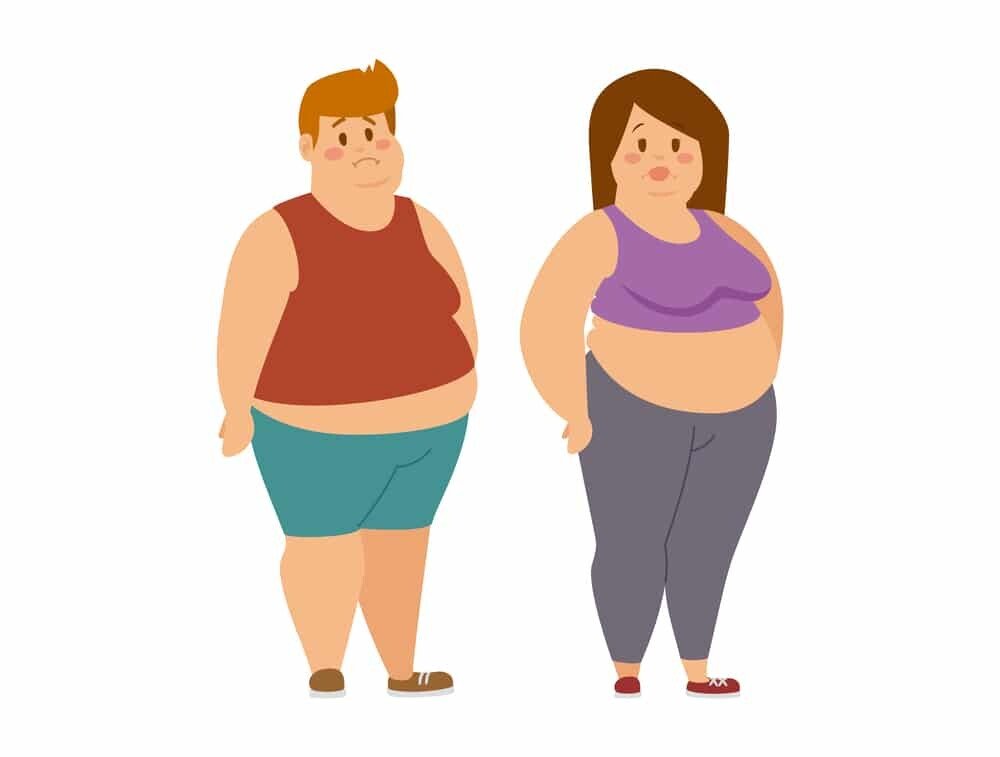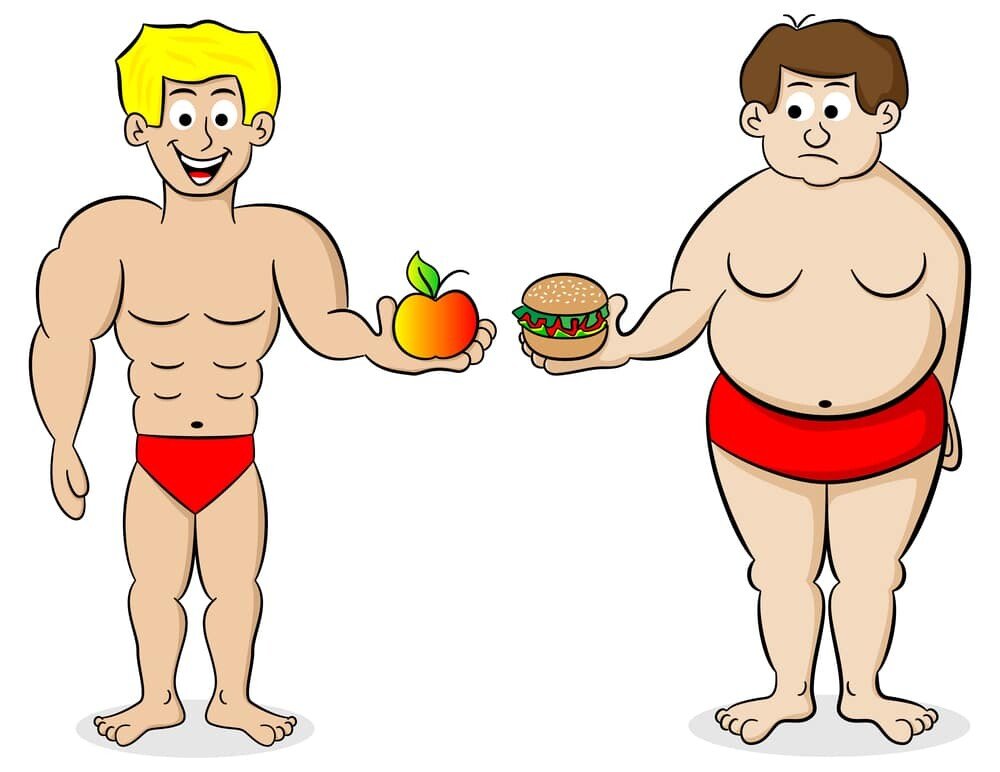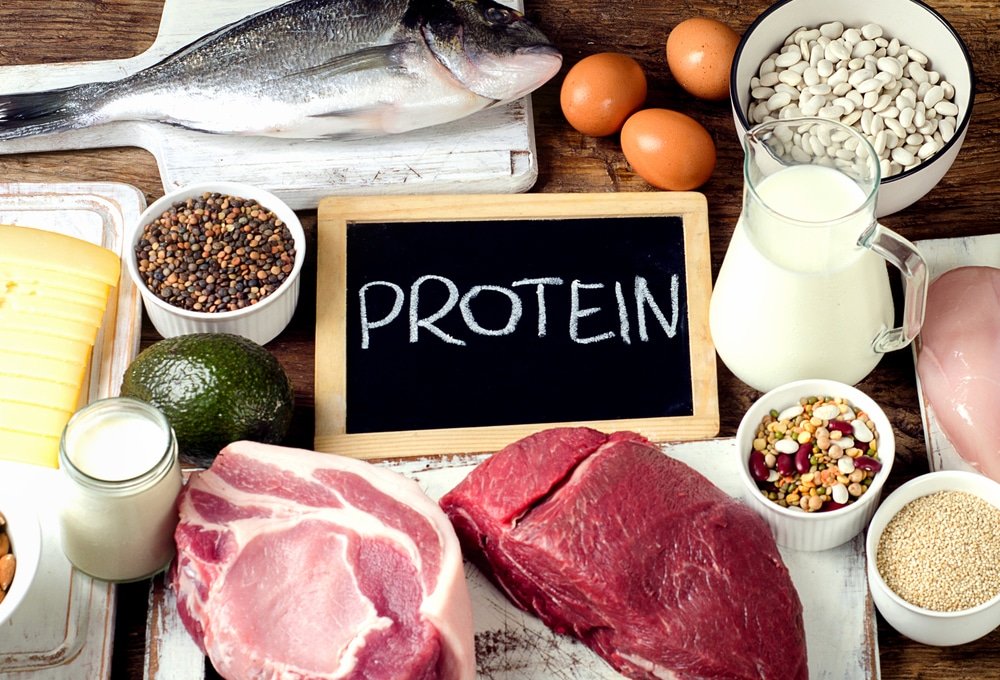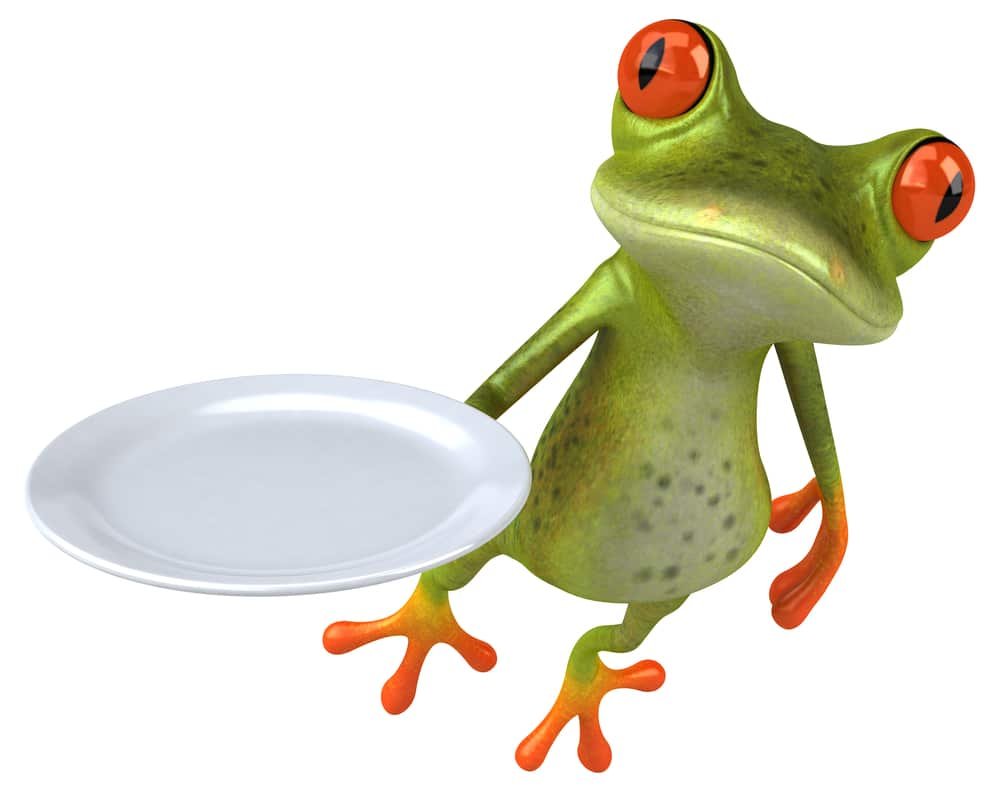Isn’t all fat the same? Turns out this isn’t necessarily the case, especially when it comes to that pot belly you have. It is actually the belief of many people around the world that a little belly fat or a cute pot belly is an indication of a “good life”, but just how bad is a pot belly?
Turns out that a pot belly is very bad for your health. Also known as belly fat, or visceral fat, getting rid of your bulging midsection is more difficult that losing fat from other parts of the body.
What’s worse is the fact that you don’t even have to be technically overweight to have a pot belly. Many otherwise normal weight individuals have a pot belly, increasing their risk of metabolic disease significantly, without even knowing it.
Tired of spending incessant amounts of money or time on solutions that never work? Well you’re in luck. Losing that pot belly doesn’t have to be hard, though we aren’t saying it’s a walk in the park either. You need to be consistent, and cultivate habits for the long haul.
Ready to learn about some of the most effective and proven ways to lose that pot belly once and for all? Then read on below to get started.
How to Get Rid of a Pot Belly

Exercise
Making the list when it comes to losing body fat, which includes belly fat, is exercise. Let’s face it; the vast majority of people do not exercise enough, even if they have a sedentary job that requires little to no energy expenditure. What do you think will happen over time?
Fat accumulation and weight gain is an almost assured result, but the good thing is that it’s never too late to add exercise to your life. Depending on exactly how much belly fat you need to get rid of, you can start off by exercising about three times per week. Be sure to include weightlifting or resistance exercise, along with cardiovascular exercise to ramp up your metabolism and promoting utilization of fat.


Then, gradually increase frequency to four sessions per week and the duration spent working out, and you should start seeing improvement in a reduction of the stored fat around the abdominal region.
Not seeing any change even after several weeks? Then it is probably time to start focusing on order variables. We will discuss a bit more specifics related to exercise below.
Modifying Your Diet

The approach you take to losing belly fat needs to be a bit different from that of other parts of the body, especially since belly fat is much more resistant to being burned for energy.
In general, many of the principles still hold true such as reducing net calories over the course of the day by limiting your consumption of carbohydrates and sugars, and emphasizing higher-quality fats -the addition of Omega 3 fish oils and conjugated linolenic acid can significantly help promote body recomposition – which includes removal of belly fat.
Use Probiotics
Probiotics are beneficial bacteria which reside naturally in our intestines, and actually comprises a large part of the immune system.
Even though probiotics are important to our immune system, they can make a huge difference in the amount of belly fat we carry around, especially if you are a leaner individual and do not think the bloating in your abdomen is as a result of excess fat accumulation.
Not only do probiotics supplementation can help to remove fat retentionfrom the abdomen, but they can also help to regulate bone motility.
While these may seem like irrelevant changes, you might soon notice a significant change in your waist from using these good bacteria a short period of time.
Consume More Soluble Fiber
Consuming fiber is a very important part of a balanced diet, but when you’re trying to lose belly fat it becomes even more important.
While both types of fibers play important parts in the diet – this includes insoluble and insoluble fiber, when you’re trying to rapidly lose belly fat, soluble fiber trumps the other.
How exactly does it do this? For one, universally all types of fiber are known to help suppress appetite, by helping you to feel fuller. Of course, this translates to a reduced number of calories consumed over the course of the day.
In addition to this, there is the possibility that soluble fiber can actually help reduce the accumulation of abdominal fat. Small-scale studies found that adults that consumed significant amounts of soluble fiber exhibited decreased accumulation of fat in this area.
Not sure where to get your soluble fiber from? It’s virtually everywhere. If you are a fan of juicing, the fiber you typically obtain after tossing the pulp is primarily of the soluble Friday.
On that note – it is important to state that soluble fiber usually act as nutrition for the probiotic bacteria residing in your intestines. This makes for a very useful double whammy!
Cut Back On The Booze
Alcohol is quite likely one of the most nutrient empty foods/beverages human beings are known to consume in abundance. Yes, there is evidence that consumption of a small amount of red wine daily is actually beneficial for your health, but that aside, the majority of alcohols do nothing for you.
You might have noticed that the classic beer belly – an accumulation of fat in the abdominal regioneven in the absence of overall obesity, is extremely prevalent in people that drink, as the name suggests, beer.
In addition to packing a massive calorie burden with each glass or bottle that you drink, the majority of alcohols are actually pseudo-estrogens, compounds which mimic the effects of the female hormone estrogen in the body. This is particularly troublesome in men, often leading to a scenario of estrogen dominance.
Added to the fact that alcohol may invariably cause bloating in your abdomen, and you have a cocktail for accumulating more belly fat. Limit the amount of drinks you take per week to 3, or even less than that. You will be happy you did looking back 6 months later.
Meditate

You’re probably thinking, how can yoga and meditation help me lose belly fat? Well, turns out there is actually is a scientific basis to disclaim. If you remember during the late 90s and early 2000 is a popular weight-loss supplement by the name of Relacore made waves all over the world.
This supplement was said to help reduce cortisol levels, cortisol being the primary stress hormone produced in humans.
Cortisol is essential for our survival, as it helps us to deal with stress and situations that the body is not well adapted for, and in primitive times, initiated the fight or flight response.
However, in this day and age, we hardly have real need for this fight or flight response. Does this mean that it is permanently turned off?
Not at all. In fact, we have reprogrammed our bodies to activate this response at the most unnecessary times. Running late in the morning? Your stress levels probably skyrocket as you sit in transit knowing that you would be late for work.
The same is said for when you need to meet deadlines, or are just anxious and worry about things that may never come.
All of those scenarios trigger cortisol release.
And just for the record, the reason cortisol is bad in the context of belly fat is the fact that it causes the storage of visceral fat. Back in the day, visceral or abdominal fat was considered prime real estate. Our ancestors who were primarily hunter gatherers, would go a long periods of time without real access to food. As a result, fat stores were highly prized, and often times necessary for our survival as a species.
In today’s world, however, we eat several meals a day, and scarcely ever tap into our stored body fat reserves. Unless you are actively dieting or trying to lose weight, you may go your entire life carrying an excessive amount of weight.
This is why meditation is so useful. Meditation has proven itself to be one of the most effective ways to reduce and manage stress, and your cortisol levels. Your ability to not become stressed out ensures that your cortisol secretion is modulated.
Reduced frequency of cortisol spikes equates to a lesser accumulation of abdominal fat. This is the way it’s meant to be, and why people coined the term “stressed out and fat”.
Eat More Protein

Protein is one of the most important macronutrients when it comes to recovery and our overall health.
Critically involved in every body process, from muscle building, to immune system defense efficiency and recovery of damaged cells, lack of adequate protein in your diet will have far-reaching implications.
In the context of being beneficial for belly fat reduction, protein plays its hand here thanks to its ability to kick start your metabolism.
Every time you consume food, our body needs to expend a certain amount of calories to break down this food, otherwise known as metabolism.
Of the three major macronutrient groups; carbohydrates, fats and protein, proteins possess the highest thermic effect of them all.
This means that when we eat proteins, a large proportion of the calories, sometimes between 20 to 40% of the net calories we consume, are used just for the processing of this food.
For instance, if we consume 100 cal worth of protein rich food, our bodies might use anywhere between 20 and 40 cal just to process it.
You can see why this is great when it comes to calorie management. You may calculate on paper that you consume 1500 calories over the course of the day, but after taking into account the thermic effect of protein, you may be left with 1300.
But that’s not all protein does by a long shot. In fact, protein plays a very important part in appetite modulation, and muscle protein synthesis.
Calories are actively utilized within muscle cells, in structures known as mitochondria. These mitochondria are actually factories that use calories for the production of energy. The larger our muscle cells become, or the greater the number of these muscle cells, the larger or more abundant the number of these factories are as well.
What do you think would be better? Having a factory that can use 5 g of protein per hour, or 10 factories that can use 5 g per hour? You see where we’re getting with this.
This is why one of the primary ways for losing fat, including belly fat, is to increase your protein intake, and reduce your consumption of another macronutrient group (mainly carbs).
Not sure which protein rich food you should be looking for? Lean meats are best. Think of fish, chicken, and to a lesser extent beef and occasionally pork.
Restrict Carbohydrates
By far one of the most sustainable and effective ways to reduce body fat has to be carbohydrate restriction. Over the past two decades, low-carb dieting has become extremely popular, owing to the fact that its results are sustainable given that you make an effort and dedicate yourself to the plan.
There are many different versions of low-carb dieting that exist today, but the most effective of them all has to be the ketogenic diet.
The ketogenic diet involves significant restriction of carbohydrates, usually a maximum of 50 g per day, and increasing the consumption of high quality fats, while keeping protein consumption moderate.
Wondering what the science behind the ketogenic diet is? The body’s primary and preferred energy source is glucose. In the absence of this fuel, or when it is restricted, our body makes metabolic adaptations to start utilizing stored fat for energy.
The products formed by the breakdown of fat are known as ketones, or ketone bodies, and hence the name the ketogenic diet.
The ketogenic diet is especially attractive to people that are already overweight and also trying to lose belly fat, to diabetics or people diagnosed with prediabetes, or anyone interested in it for health and well-being. There are many benefits of adapting the ketogenic diet, including enhanced blood glucose management, improved cardiovascular health and decrease oxidative load on the body to name a few.
Keep A Food And Exercise Diary
Many times people fail not for lack of trying, but for lack of journaling what actually works. Nowhere is this more evident when it comes to keeping records or dietary logs of foods consumed.
Many people think that by just consuming an overabundance of protein and limiting carbohydrates that they will magically start losing weight.
While this sounds solid in theory, unfortunately this isn’t the way it works in the real world. One reason why this approach fails is the fact that proteins can actually convert to glucose under special circumstances – unknown to many people that attempt it and fail.
Tracking is essential when you’re trying to optimize your diet to find what you respond best to.
It is important to note that just because we advocate keeping a journal, this does not mean that you need to do so for the rest of your life. It is merely for an introductory phase as you become familiar with average caloric loads, and which foods your body responds best to.
This way it is also easier to track changes that you make so that you can come much closer to your goal of eliminating belly fat.
Try Some Thermogenic Foods
Thermogenic foods sound cool, don’t they? They are pretty cool, or rather, should I say hot, as their primary purpose is to elevate your basal metabolic rate, even if only marginally.
There are many thermogenic foods in the world, even foods high in protein can be considered thermogenic as they indirectly cause your body to use more calories.
However, keeping true to the name, thermogenic foods would more accurately represent those such as hot peppers, or green tea.
Consumption of these foods actively cause the body to burn more calories at rest, or while actively involved in exercise.
Thus, if you would normally burn 100 cal sitting on a couch for one hour, you may be pleasantly surprised to learn that you now burn 130. Not a life-changing difference, but every little bit helps if you’re diligent.
Attempt Intermittent Fasting

If macronutrient restriction, or many of the other tips mentioned here don’t sound very appealing to you, there is another way to reduce caloric intake that does not necessarily require you to abstain from foods you like.
What is this intriguing diet style called? None other than intermittent fasting.
As the name might suggest, intermittent fasting refers to periods of abstaining from all foods, interspersed with sessions where you are allowed to re-feed and fuel your body.
There are many different approaches to intermittent fasting, but the most common would have to be the 16:8 approach. In this style of intermittent fasting, you are required to fast 16 hours per day, and for eight hours you are allowed to eat.
Now before you fly off of a tangent and say that this sounds way too difficult, there are simple ways for you to make it easier than it sounds. For example, a common approach many people successfully used while intermittent fasting is to ensure that a large number of these hours that they are fasting coincides with their sleeping pattern.
So for example, you can have dinner at 1800 hrs. At night, following which you will stop eating for 16 hours. Calculating 16 hours from that brings the time to 10 AM the following day. Assuming that you wake up at about seven in the morning, this means that you just need to wait three hours before you have something to eat.
You can, of course, tailor this approach to however you feel comfortable, but this is just an example of how easy it can be.
Periods of intermittent fasting that last up to this amount of time have shown to induce beneficial metabolic changes, without tripping the human starvation mechanism.
The starvation mechanism effectively puts a stop to any attempt to lose weight, as the body switches gears and focuses primarily on storage of calories. This is because our primitive DNA evolved to survive long periods without food. During these extended periods of fasting, our metabolism slowed as our bodies attempted to maximize how long we could survive with the body fat stores we have.
You can think of this as a power saving button on your computer; it works, but just at a lower efficiency. This is not good news for fat burning, as your efforts will be poor.
Get More Sleep
Sleep deprivation is extremely common, and said that affect more than 30% of adults in the United States. Sleep deprivation is generally classified as getting less than six hours of sleep a night, a far cry from the ideal recommendation of between eight and nine hours. But why is this so? A big part of the answer lies in our hectic lives.
Sleep is simply regarded as an activity that we can replace with more productive work, such as sitting in front of the computer all night working. While in the short run it may seem like you’re actually being more productive, you are likely to find out in no time flat that sleep simply cannot be replaced.
Not only does sleep help with recovery – in fact, it is essential for normal cellular recovery, but it also helps to hit the reset button on the various hormones and neurotransmitters that are produced and used in the body over the course of the day.
Interestingly, people that sleep five or fewer hours per night are much more likely to gain weight– as much as 30 pounds over the course of one year, when compared to their peers who slept more than seven hours.
A large part of this sleep deprivation and potbelly link has to do with the hormone cortisol once again, which ends up being chronically elevated for several hours through the day, and in severe cases, chronically elevated.
Do yourself a favor – get to bed earlier tonight. If you have difficulty sleeping, try a natural sleep aid such as melatonin, St. John’s wort or Valerian root.
Go For A Run
There is no doubt about it – aerobic or cardiovascular exercise is extremely effective for losing weight over the course of several months, and from all parts of the body. When it comes to your potbelly, it can actually help you lose it in a few additional ways as well.
Apart from its massive calorie burning potential, runners experience something known as runners high, which is basically the body increasing its production of feel-good chemicals – otherwise known as endorphins, to help overcome the discomfort caused by distance running.
This effect even persists after your run, so that your motivation levels soar. This makes it ideal for getting things done after your run, because let’s face it – being unmotivated has far-reaching implications on your life, and you are more than likely to keep your potbelly for life.
Drink Lots Of Water

You’ve heard it 1,000,001 times before – drink water and drink lots of it. And yet, we’re pretty sure that you don’t meet the minimum recommendations for this vital nutrient.
But why exactly is water so important? The reasons are so many, but for the sake of time and convenience, let’s just focus on a few.
First and foremost is water’s ability to blunt appetite. When you’re trying to lose that potbelly, you will have to limit and restrict your overall calorie consumption. This can be difficult for sure if you are frequently hungry, as nothing kills your desire to lose weight more than being hungry. In fact, this is one of the most popular reasons why diets fail within the first week or two.
Drinking a glass or two of water before a mealwith help you feel fuller, and can even help you to eat less. When was the last time you left back food on your plate?
In addition to this, virtually all of the body’s metabolic processes require water to be done. If you are dehydrated, metabolism slows down, and you may end up blunting your quest to lose that potbelly. Fat burning is not high on the body’s list of critical processes, so you better believe that if you are going to skimp on water, the body is not going to prioritize weight lost – especially that around the abdomen.
Tired of water? There are a few alternatives you can go for. Green tea, black coffee, and to a very limited extent flavored water substitutes are acceptable. Just be sure to consume a low-calorie water beverage if you decide to go that route, and consume it very infrequently.
Invest In A Pedometer
What is a pedometer you ask? To put it simply, a device that measures the number of steps you take every day. You’ve probably seen people counting their steps, and for good reason – a pedometer can help you reach your goals easier.
There’s nothing worse than trying to achieve a goal without measuring and recording what you are doing to get there. The pedometer offers one easy way of meeting minimum targets daily. Most people strive for 10,000 steps, but if you can safely or comfortably do more every day, by all means go for it.
Pedometers are so affordable these days, that there is scarcely a reason for you to not invest in one.
Get Familiar With Meal Prep
Fitness athletes and even professional bodybuilders note that building muscle and getting rid of their belly fat and potbelly is not done in the gym, but rather in the kitchen. This is the reason why weekend meal preparation is a ritual that needs to be embraced.
If you have a full-time job, it can be nearly impossible to make fresh home-cooked meals every single day, multiple times daily.
The best solution for this is to prepare your meals in bulk on the weekend. You do not need a massive repertoire of cooking skills in order to make palatable foods.
Stick to a few foods that you can make very well, which are also very nutritious.
For many, chicken breasts and fish are staples when it comes to protein, along with as many vegetables as you can imagine, and more controlled portions of carbohydrates.
Diligent meal prep is the thing that can make a difference in your life. This is especially true if you hope to get that summer ready body either this year, or for the next summer.
Use More Coconut Oil

There was a period in time when coconut oil was regarded as a very unhealthy fat, but luckily the truth has come to light, and now it is appreciated as one of the best.
Coconut oil is a rich source of medium chain fatty acids (better known as MCTs, medium chain triglycerides), which bypass liver metabolism and assist with the production of ketone bodies. If you recall, we mentioned that ketone bodies are used as alternative fuel sources in the absence or scarcity of glucose.
Because of its speed of action, coconut oil is especially attractive for getting you on your feet when consumed first thing in the morning.
But it also does much more than helping give you a clean energy boost; limited studies have shown that it can also directly help reduce belly fat to help you get rid of that potbelly. It can also stimulate metabolism, and reduce the overall likelihood of the body storing excess calories as fat.
Best of all? Another study showed that obese men who took it over the course of 12 weeks, lost inches off their waists, all without modifying diet or adding exercise! This is significant, as not many things will change a person’s health without making use of several other variables.
Keep in mind that coconut oil is still extremely high in calories, so moderation remains key. Try to limit to one or 2 teaspoons daily for now, and eventually you might be able to replace other fats with this versatile and super healthy what.
In Summary
Getting rid of your potbelly in a few months is not only achievable, but also extremely easy if you are consistent in your approach and follow some of the steps we outlined.
If you can honestly say that you have tried your best and applied what you just mentioned and are still unable to see a change, we would then advise that you seek the advice of your physician. In a small number of people, a potbelly can be the result of fluid accumulation in the abdomen, such as that caused by a condition known as ascites, or liver dysfunction.
There is no reason for you to walk around with an excessive amount of belly fat, when it endangers your health, and can really take a toll on your self-confidence. You can get the body you deserve – sooner rather than later.


Join the 7‑Day “Better Gut” Plan
Pop in your email and we’ll send Lesson 1 + the printable list.







